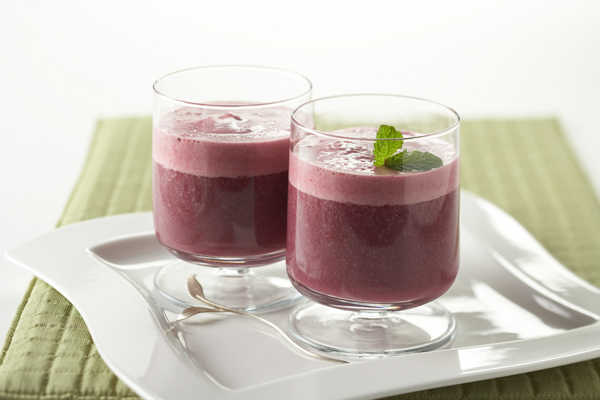
Dairy Alternatives Entering Foodservice by Moving Beyond Coffee Shops
08 August 2022Restaurants offering lactose-free products jump on consumer-driven alternative milk wagon.
By Lisa Parrish, GMC Editor
Feedback & comments: This email address is being protected from spambots. You need JavaScript enabled to view it.
Travel to your favorite coffee shop and note the number of alternative milks available. Starbucks, for example, offers five options. Consumers following plant-based diets, from flexitarians limiting their animal-based food consumption to vegetarians and vegans, are searching for more diet-friendly options in their food and beverage consumption. Alternative dairy product availability is skyrocketing to serve this demand.
According to the Good Food Institute, sales of plant milk in the United States totaled $2.5 billion at the end of 2020, accounting for 15 percent of all retail sales of milk, and 35 percent of the larger market for plant-based foods.
Popular lactose-free milks include rich and creamy oat milk, nutty-flavor almond milk, and classic and slightly sweet soy milk. Other alternative milks options, such as rice, cashew and hemp, are also rising in popularity. These dairy-free milks are made by grinding the bean, nut or vegetable into a slurry and then adding water, flavorings, vitamins and minerals. They generally have a creamy mouthfeel.
From barista to the chef
Chefs are seeing an uptick in diners looking for plant-based options on restaurant menus, according to Aaron Holt, Sysco culinary specialist and chef and owner of Doolittle Farms. This trend began in boutique restaurants focused on serving healthy meals and is moving to chain operations looking to attract health-conscious consumers.
 “People want to be healthier and it’s becoming mainstream,” Holt said. He sees trendier restaurants taking up the mantel of healthy menu options that are either dairy-free, gluten-free, vegetarian or vegan. Breakfast applications like oatmeal, pancakes and biscuits are using dairy-free milks. He also noted dinner items like curries and diary alternative bechamel sauces are finding their way onto menus.
“People want to be healthier and it’s becoming mainstream,” Holt said. He sees trendier restaurants taking up the mantel of healthy menu options that are either dairy-free, gluten-free, vegetarian or vegan. Breakfast applications like oatmeal, pancakes and biscuits are using dairy-free milks. He also noted dinner items like curries and diary alternative bechamel sauces are finding their way onto menus.
“However, it’s not all restaurants, bars and grills,” he said. “I see it in smaller establishments that focus on fresh, healthy meals.”
However, large chain restaurants are taking note too. For instance, Mellow Mushroom offers a plant-based pizza that includes their trademarked dairy-free cheese, Follow Your Heart, as well as meatless proteins tofu and tempeh. Baskin Robbins added two dairy-free options, Chocolate Chip Cookie Dough and Chocolate Extreme, to their menus in 2019. And, following the trend, Cold Stone Creamery introduced their first dairy-free ice cream flavor, Silk Chocolate Almond Milk Frozen Dessert, into their stores nationwide.
Classroom lessons on dairy alternatives
 Teaching culinary students how to use alternative milks in everything from desserts to mac and cheese starts with learning the basics. Holt suggested instructors borrow a lesson from his operations manual; he often uses blind taste tests at Sysco and educators could do the same with various diary-free milk options in their classrooms.
Teaching culinary students how to use alternative milks in everything from desserts to mac and cheese starts with learning the basics. Holt suggested instructors borrow a lesson from his operations manual; he often uses blind taste tests at Sysco and educators could do the same with various diary-free milk options in their classrooms.
“You could begin by blind tasting four different alternative milks like soy, almond, oat and cashew,” he suggested. “See if your students can identify the variety. You can even make it a competition.” He also suggested making easy smoothies with equal parts dairy-free milk in each option. Finally, to top off the taste test, group students and give each one a different alternative milk to use in a biscuit or muffin recipe.
Holt said that subbing an alternative milk for a dairy product is not as easy as just using equal parts. Teachers could help students understand changes in texture or flavor profile. “For instance, you can swap in soy milk in an application and might not notice a change. But, if you used oak milk the moisture and flavor may be different,” he said.
Limits to alternative milks
When choosing milk alternatives, chefs must consider the allergy risk of one milk over the other. Nut-based milks will not be suitable for customers with nut allergies and others who are sensitive to soy. It’s important to balance the options to suit customers’ unique dietary and lifestyle requirements.
